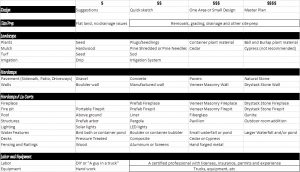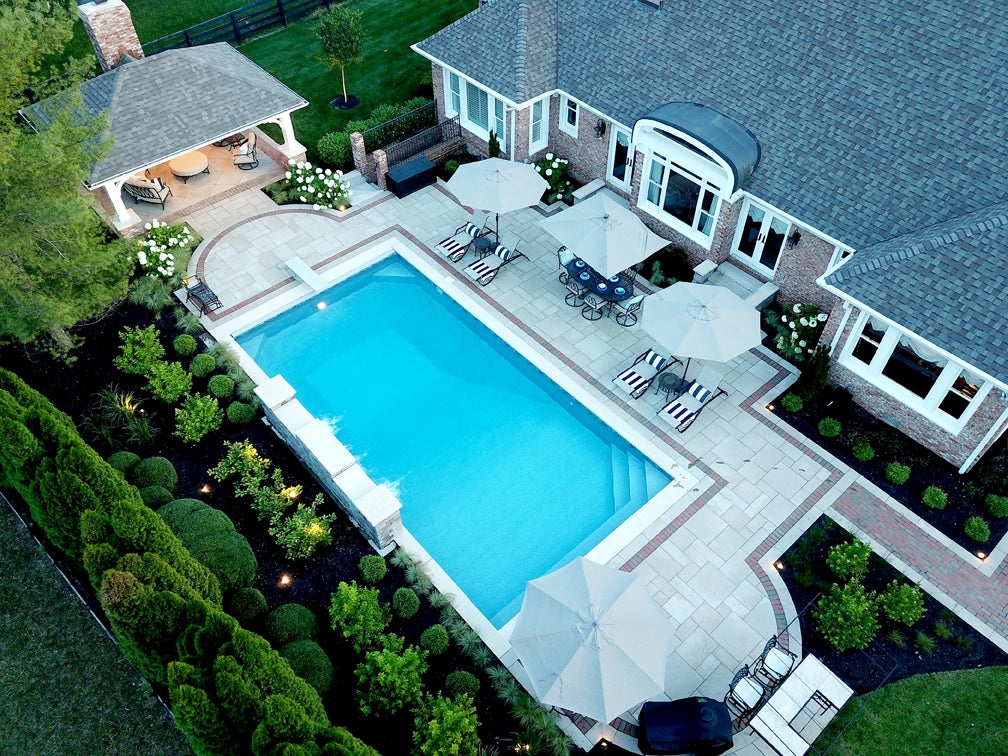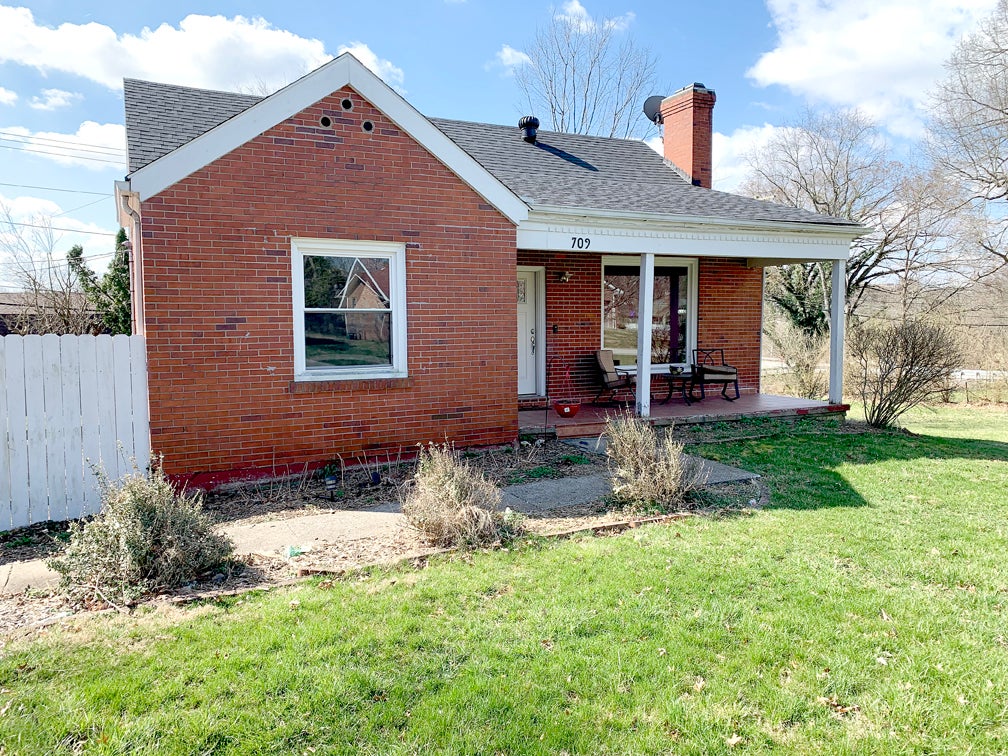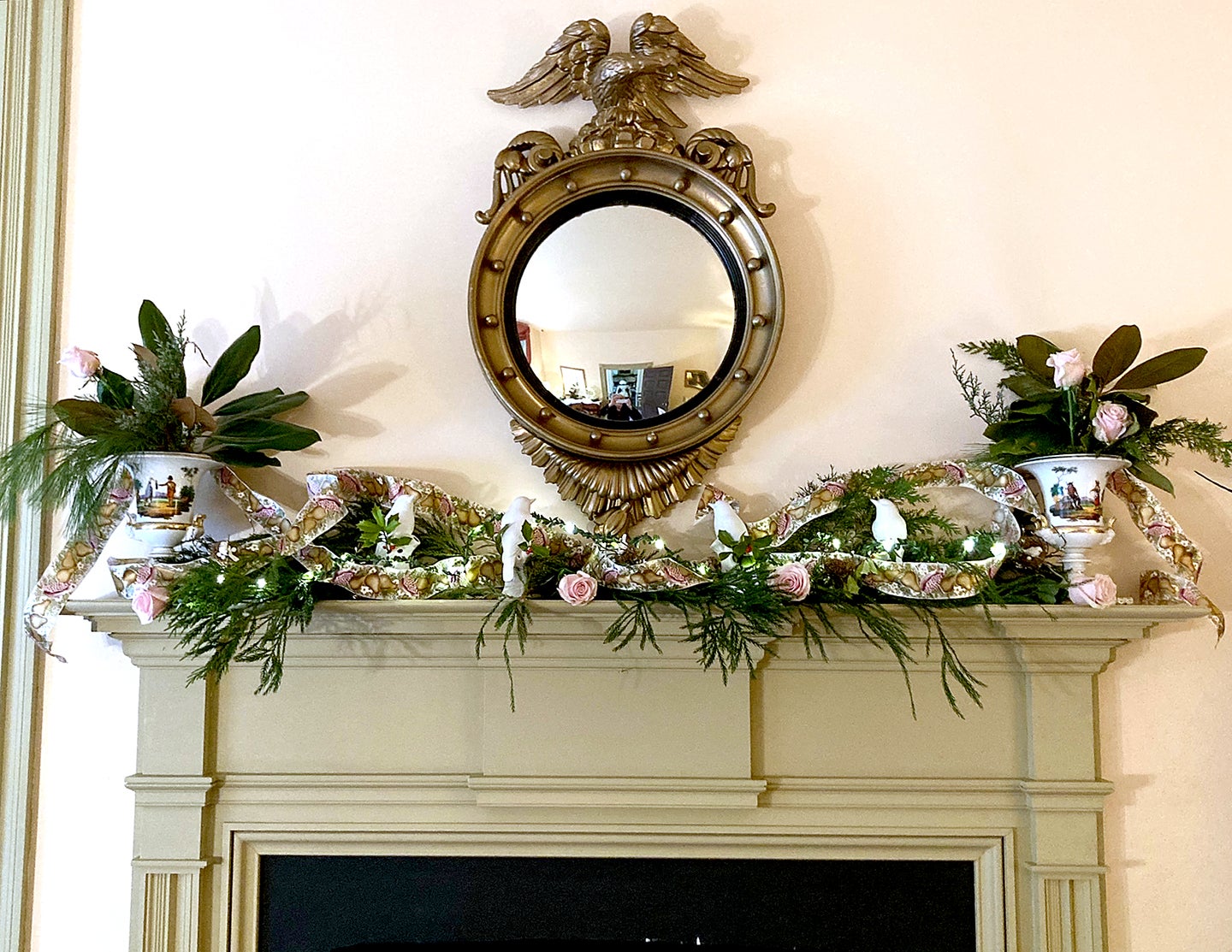When you buy a home, you give your realtor a budget. When you design and build a home, you give your architect and builder a budget. Your outdoor space is no exception.
The next questions is: should you tell your designer and builder your budget? Yes! Discussing a realistic budget up front saves everyone time and gets your project moving along more quickly. It reduces back and forth of redoing designs and estimates, eliminates or reduces surprises, and lets you prioritize your needs and wants. The size of the work area, details and finish materials will dictate the expense.
While it isn’t easy to set a landscape budget, the easiest method is to do a percentage of the house and property value, which is typically 10-15% of the house value. For example, if you have a $300,000 home, a $30,000 to $45,000 might be a good starting point for setting your budget. According to Zillow, the median home value in Franklin County is $136,200 with the current median listing price of $169,900. This means if you are after a professional landscape, the budget could start in the $13,000-17,000 range. Of course, there are always projects that can be done for less. Phasing is also a popular approach when you begin with a master plan and prioritize your needs.
Outdoor living adds square footage to your home and landscaping adds beauty, so view it as an investment in your lifestyle, the environment and your property. Professional landscaping projects can cost anywhere from $5,000 to $250,000 or more. That’s quite a range! Options to consider include design, removals, site access, site prep, features, materials and labor.

No matter your home value or disposable income, there are always options. Do-it-yourself to the rescue — if you are willing to sweat and flex your muscles, you can create a nice landscape with little funds. DIY labor, seed, smaller sized plants, gravel or concrete, reclaimed/repurposed materials and pressure treated wood are all great options for keeping the budget on the lower side. Consider equipment needs and rental costs as well.
A slightly higher budget range can get you concrete, pavers, cedar or composite wood, and nice size plant material. Natural stone, pavers, lighting, walls, water features, super large plant material, extreme site preparation and conditions, pergolas, pavilions and irrigation will require an even larger budget.
A good starting size for most plants will be 1-quart or 1-gallon perennials, 3- or 5-gallon shrubs, 7- to 10-gallon small trees or large shrubs, 5- to 7-foot multi-trunk trees and shrubs or 1.75- to 2-inch caliper single trunk trees. Not all trees and shrubs are created or grown equally, so pay attention to where they come from to ensure soil compatibility and proper growth habit. Locally available or Kentucky grown materials don’t always equate to savings, yet are generally better quality. Site and bed preparation is key.
Additional expenses can include special equipment, engineering for walls over 4-feet, rock removal and more. The main considerations are: what do you need, what do you want and what can you live without?
The budget and design can be as simple or elaborate as you want. Having a realistic expectation and communicating what you are willing to invest before you begin makes for a successful project for all involved.












